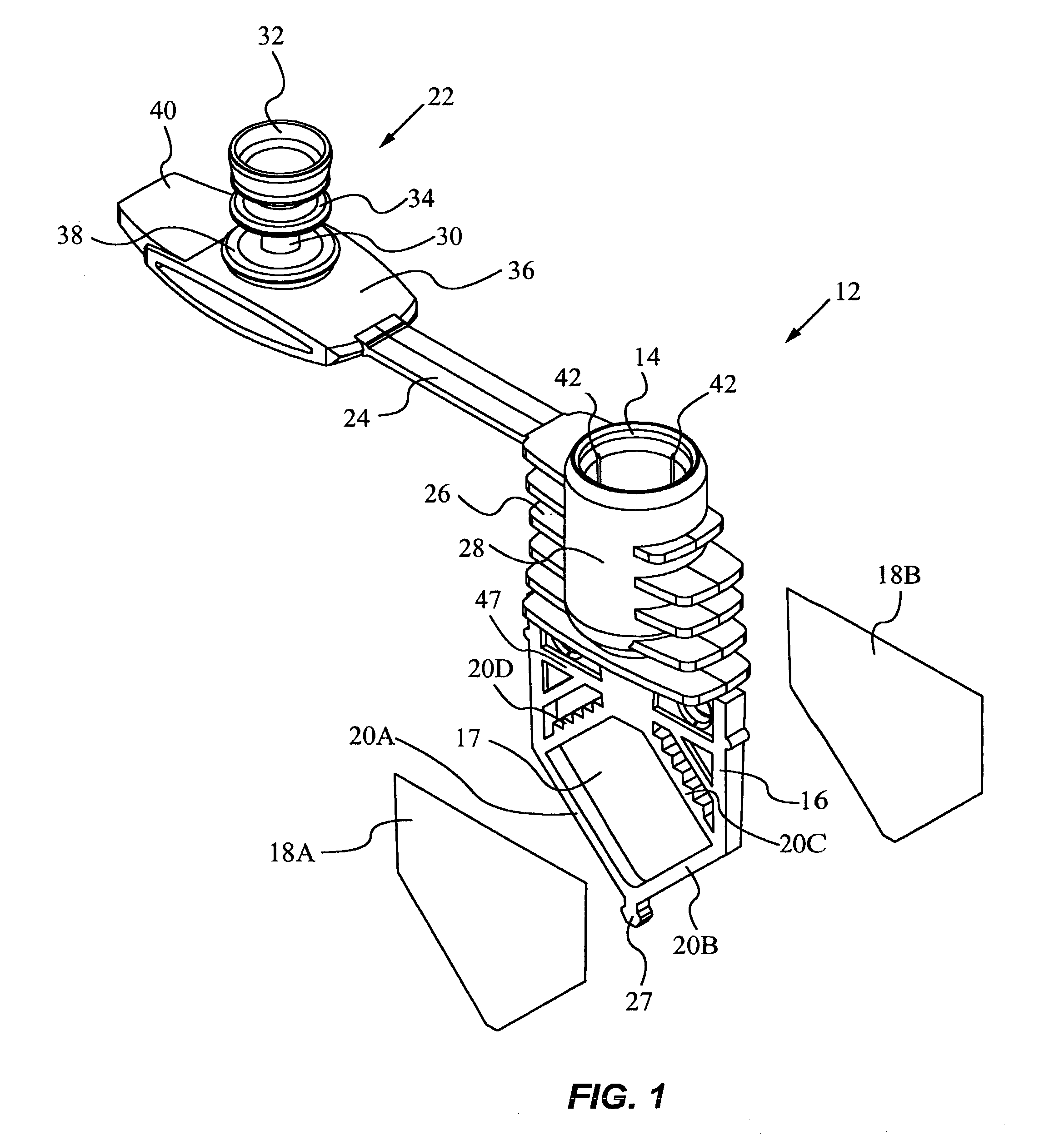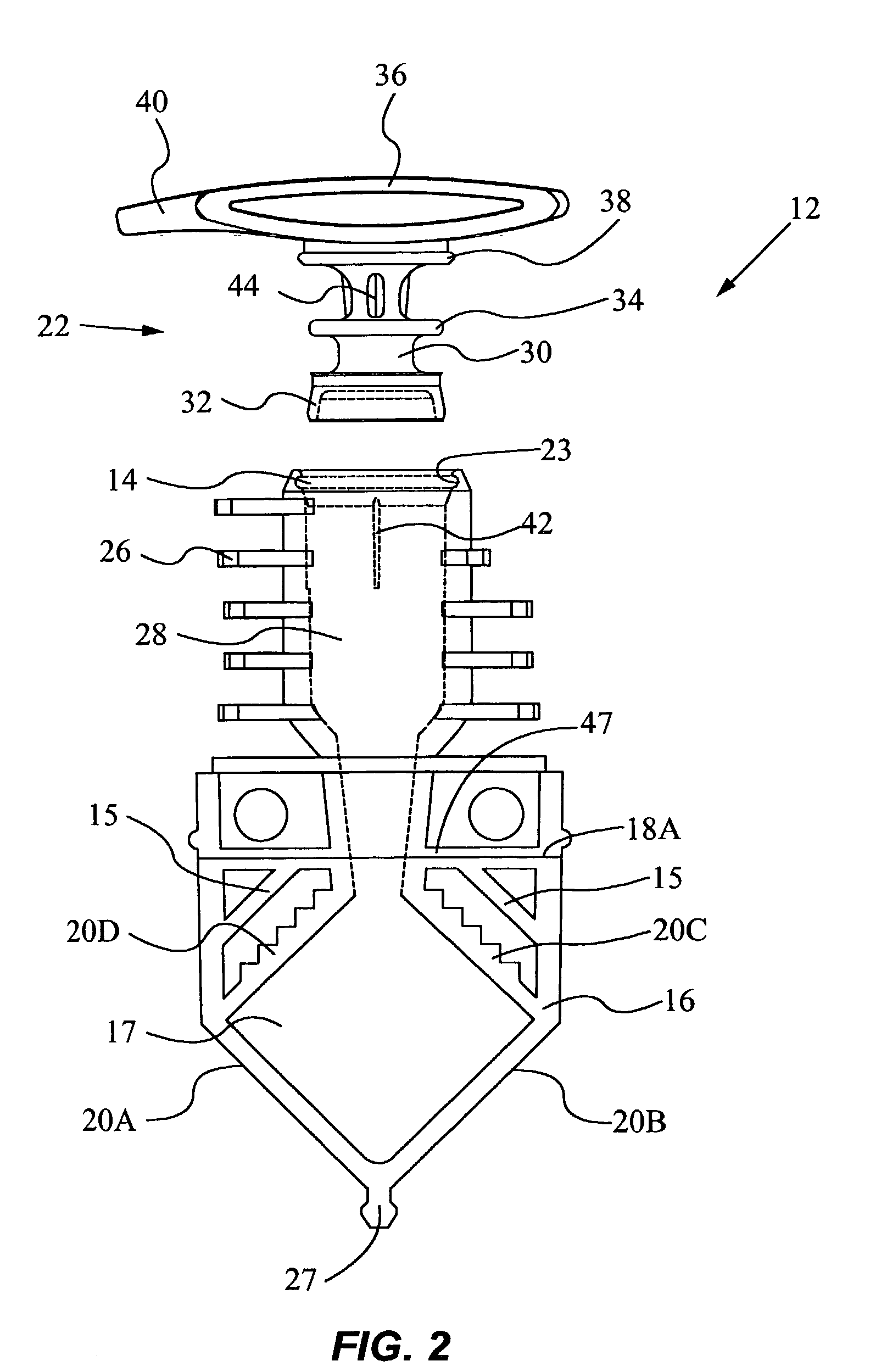Container for holding cells or viruses for disruption
a technology for cells and viruses, applied in the field of containers for holding cells or viruses to be disrupted, can solve the problems of insufficient flexibility, time-consuming purification steps, and inability to amplification of nucleic acids by chemicals, and achieve the effect of sufficient flexibility
- Summary
- Abstract
- Description
- Claims
- Application Information
AI Technical Summary
Benefits of technology
Problems solved by technology
Method used
Image
Examples
Embodiment Construction
[0022]The present invention provides an apparatus and method for disrupting cells or viruses. The cells may be animal or plant cells, spores, bacteria, or microorganisms. The viruses may be any type of infective agents having a protein coat surrounding an RNA or DNA core.
[0023]The apparatus includes a container having a chamber for holding the cells or viruses. The apparatus also includes an ultrasonic transducer, preferably an ultrasonic horn, for contacting a wall of the chamber and for transmitting ultrasonic energy into the chamber through the wall. The apparatus further includes a support structure for holding the container and the transducer against each other such that the transducer contacts the wall of the chamber and for applying a substantially constant force to the container or to the transducer to press together the transducer and the wall of the chamber. The transmission of ultrasonic energy from the transducer into the chamber rapidly disrupts the cells or viruses to ...
PUM
 Login to View More
Login to View More Abstract
Description
Claims
Application Information
 Login to View More
Login to View More - R&D
- Intellectual Property
- Life Sciences
- Materials
- Tech Scout
- Unparalleled Data Quality
- Higher Quality Content
- 60% Fewer Hallucinations
Browse by: Latest US Patents, China's latest patents, Technical Efficacy Thesaurus, Application Domain, Technology Topic, Popular Technical Reports.
© 2025 PatSnap. All rights reserved.Legal|Privacy policy|Modern Slavery Act Transparency Statement|Sitemap|About US| Contact US: help@patsnap.com



